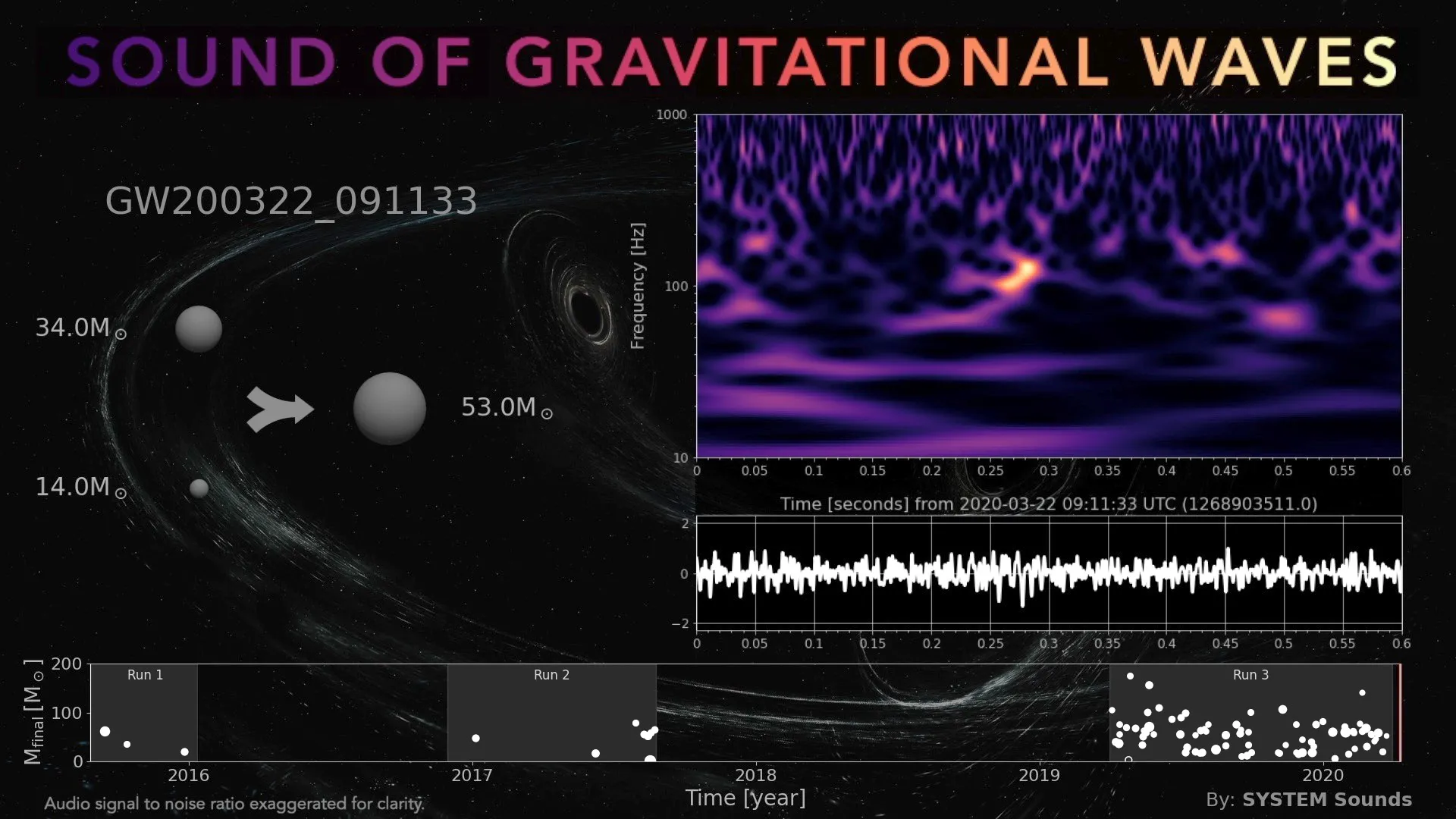Gravitational Waves
Listen to ripples in spacetime caused by cataclysmic events.
This is a sonification of the first 90 confirmed gravitational wave detections, each the result of merging black holes and/or neutron stars. The extracted waveforms are synthesized and played as audio in the actual sequence they were discovered.
In the final seconds of each merger the black holes and neutron stars orbit each other faster and faster, reaching frequencies of 10s or 100s of times per second. These frequencies are within the human hearing range so we can listen to each merger unfold in real time. The increasing frequency of their spiralling dance creates a characteristic ‘chirp’ sound, marking the moment they finally merge. The time between each merger is compressed to let you experience the rhythm and variety of these remarkable cosmic collisions.
The first gravitational wave was detected in 2015 using 4km long laser interferometers called LIGO. The black hole merger that created this wave happened over a billion light years away, and hence over a billion year ago. Over the course of 3 observing runs, 89 more gravitational waves were detected, and at an increasing rate as the sensitivity of the detectors was improved. The 4th observing run started on May 24 2023 and holds the promise of even more astounding discoveries.
The black holes and neutron stars involved in these mergers are each 10s of kilometers across and orbit each other at a sizeable fraction of the speed of light. In the final few milliseconds the merger releases energy at a greater rate than all of the stars in the observable universe combined. This energy radiates as gravitational waves, carrying the signature of this cataclysmic event across the universe.

Video and sonification by SYSTEM Sounds (Matt Russo and Andrew Santaguida)
Background illustration by LIGO/Caltech/MIT/Sonoma State (Aurore Simonnet, http://auroresimonnet.com/)
Special thanks to Carl-Johan Haster